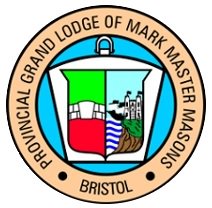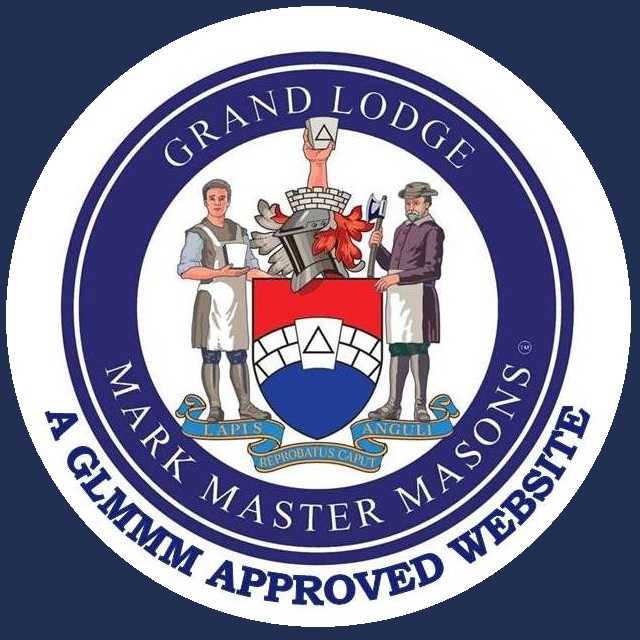The Mark Degree

The first available mention of English Mark activity in surviving minutes is recorded for 1st September 1769, by the Royal Arch Chapter of Friendship No. 3 (subsequently 257) meeting in Portsmouth.
The next oldest minute referring directly to the Mark is in 1773 for the Marquis of Granby Craft Lodge No 124, and then in 1777 for the St Thomas' Lodge No. 142 in London. In Scotland the Dumfries Lodge (now Thistle Lodge No. 62) recorded in 1770 that the Master elect was an Entered Apprentice, a Fellow Craft, a Master Mason and a Mark Master Mason. In Ireland there is a Mark Masons certificate dated 27th August 1775, issued by the Knights Templar of Kensale in County Cork.
We can assume from such geographical evidence that Mark Masonry must have been established some time before these early records, and that it was an integral part of Freemasonry which in actual fact, in Scotland, Ireland and other parts of the world, it still is, being worked either in the Craft or the Royal Arch or both.
It is only the course of English Masonic history which disassociated the Mark from the mainstream of Masonic activity, with the Premier Grand Lodge, which had been formed in London in 1717 only recognising the three Craft Degrees, and subsequently wanting nothing to do with any other form of masonry, not even the Royal Arch. This together with many other actions and edicts, eventually led to the formation of a rival Grand Lodge in 1751 which styled itself "the Antients" on the basis that the masonry they practised pre-dated that of the Premier Grand Lodge, who they dubbed "the Moderns". Lodges under the Antients were permitted to confer any degree under their Craft Warrant and the Royal Arch and Mark were two such degrees, together with others.
Therefore we ended up with a masonic rivalry between the two and which eventually culminated in the formation of the United Grand Lodge of England in 1813, but as regards supplementary degrees the only one which succeeded in remaining under the umbrella was the Royal Arch, which until very recently was described as the completion of the third degree, although that has now changed.
A number of Craft Lodges and Royal Arch Chapters continued conferring the Mark degree as they had always done, or set up unauthorised Mark Lodges for the purpose. Others sought warrants from North of the Scotland where the Mark had become a prerequisite for admission into the Royal Arch. Indeed the Mark degree flourished to the extent that the United Grand Lodge did very nearly end up recognising it, even passing a resolution to that effect in March 1856, but this was unfortunately rescinded on a technicality at the following Quarterly Communication.
The Mark enthusiasts of the day then really only had one route to follow - to set up their own separate Grand Mark Master Lodge for England, and within three weeks of Grand Lodge's final rejection of recognition, this was achieved on 23rd June 1856 with Lord Leigh, the then Craft Provincial Grand Master of Warwickshire as its Grand Master.
Today, following the continued development of our own Grand Mark Lodge, having now evolved into the Grand Lodge of Mark Master Masons of England and Wales and its Districts and Lodges Overseas, we have over 1,500 Mark and 900 Royal Ark Mariner Lodges situated in 45 different countries throughout the world. There are 41 Provinces in England and Wales, 27 Districts overseas and three groups of Lodges under Grand Inspectors, all administered from our very own headquarters situated a few doors away at Mark Masons Hall, St James London.
There is evidence that a form of Mark Degree was in existence in Scotland as early as 1599, according to the earliest known English records Mark Masonry was introduced in a speculative body at Portsmouth on the 1st September 1769, when that ubiquitous Thomas Dunckerley conferred the Mark Degree on brethren of the Royal Arch Chapter of Friendship No 257.
The Mark Degree was subsequently worked in many Lodges but the effect of the union in 1813 between the Ancients and Moderns, led to the active discouragement of the Mark Degree. Nevertheless many Lodges continued to work the degree and it has today developed into one of the most important orders for many reasons and next to the Craft and Royal Arch it is the largest of the Masonic orders and has indeed stood the test of time.
HRH Prince Michael of Kent is the Grand Master of the Grand Lodge of Mark Master Masons and his brother, HRH The Duke of Kent is the Grand Master of the United Grand Lodge of England.
Candidates are said to be “advanced” into the Degree of Mark Master Masons and must be a Master Mason of a regular Craft Lodge to be eligible for admission.
The organisation of a Mark Lodge is very similar to that of a Craft Lodge with some important changes. Four additional Officers are employed, these are the Master, Senior and Junior Overseers, and the Registrar of Marks.
It would appear that the degree grew out of an ancient ceremony in which each craftsman selected for himself a private mark, with which he might designate his particular work and this mark was duly registered with the constituted authority.
The legend of the degree is founded on statements contained within the Holy Bible, relating to the period of the building of the King Solomon’s Temple prior to the death of Hiram Abif, it teaches the valuable lesson that education is the reward of labour and contains a dramatic message.
The symbol of the Degree is a Keystone on which is engraved certain mystic letters, the meaning of which Is explained in the ceremony and Mark Master Masons wear the distinctive keystone jewel.
In Bristol we have 8 Mark Master Mason lodges, the earliest being the Canynges Lodge which is designated as TI, (time immemorial) and whose Warrant is dated 30 January 1874.
Membership of the Mark Degree is a necessary requirement for those wishing to progress further by seeking membership in the Ancient and Honourable Fraternity of Royal Ark Mariners.
Further information about how you can join this degree may be obtained from the Provincial Grand Secretary.


 Mark Masons' Hall
Mark Masons' Hall